Assess the Scene
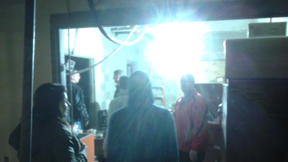
Each murder is unique, and the environment is treated as such. Once the area is secured, and any required warrants are obtained, an overall impression of the crime scene is derived by a walkthrough. Notes are taken, and sketches or video utilized to help document the scene. This is part of a systematic approach to solving the crime, which helps to determine how best to proceed in solving this murder.
At each stage of the investigation, everything is documented, using notes, sketches, photos, or video. Nearby video surveillance that may have caught evidence inadvertantly may provide useful information as wells . Cameras are everywhere these days.
Depending on the nature of the murder, specialists may be called in to help assess. If explosives were used, or some specialized weapon, experts in those areas may be needed. Speed can be of the essence both to ensure that evidence is collected while still fresh, and to prevent weather or other influences from affecting the evidence.
Collect Evidence
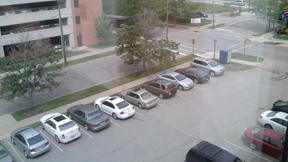
If the evidence collected at the scene is perfect, and solves the crime, it is useless if not allowable in court. Ultimately the goal is a successful prosecution, so all steps to preserve the chain of possesion of the evidence, as well as to preserve its efficacy, must be followed.
The use of labelled evidence bags, blood sample containers, DNA swabs, and even more specialized recpticles for the unexpected piece of forensic evidence, ensure that at trial the efforts will not be in vain.
Everything will be attacked by the defense, so documentation and preservation are key components of the evidentary process.
All evidence goes to the lab for analysis, and the results are documented and added to the case file to help not only in solving the crime, but proviing it in court.
Analysis
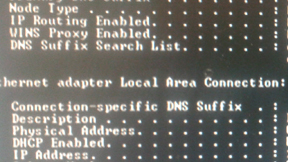
Analyzing the collected evidence is a combination of lab results, expert reports, and specialized testing, but also involves context. How the evidence fits in with the established timeline, for example, may be the difference between proof and coincidence.
The hard science of lab work and forensics must follow all the rules of documentation and professional standards, and in the end is only as good as the personnel doing the work. Even that will be attacked during the trial, so the standard is high. The net result is objective information based on observable data, which must be combined with logic, and sometimes a bit of luck, and almost always a lot of hard work, to solve the murder.
When all is said and done, the goal is to identify the perpetrator of the murder. Part of this includes the process of elimination, when evidence indicates that certain suspects could not have committed the crime.
An interesting aspect of modern forensics is the use of DNA, both to identify suspects and victims, but also for other purposes. Cold cases, that may have gone unsolved for many years, are sometimes now cleared due to new DNA evidence. Further, in some cases wrongly incarcerated people are sometines cleared, even after years in prison, when DNA evidence implicates a suspect in that case.
The future will almost certainly yield even more powerful techniques for identifying the perpetrators of the ultimate crime.
Prosecution

It is one thing to assess, collect, and document evidence. It is quite another to survive cross examination by a hostile defense lawyer while on the stand during the trial. Depending on the role of the investigator, such as CSI, Detective, Police Officer, or Expert Witness, the actions taken and results derived during the investigation will be probed for the slightest weakness by the defense. A professionally conducted investigation will help reduce the chance of evidence being disallowed, but it is equally important for the investigator to not get flustered when being questioned about their role.
Remaining calm and professional under the duress of an antagonistic, and probably clever, questioning, is a skill of its own. Sometimes only experience can hone this skill, but preparation is also important. Mock trials and interviews are tools used to help prepare investigators for this onslaught, but command of the facts is the best preparation.
Conclusion
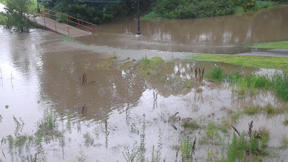
You may not know where all the evidence is hidden, but murders are solved by applying a system. This system consists of a predicatble series of logical steps and documentation that is employed from the moment a homocide is reported. Assessing the scene, collecting evidence, analyzing the evidence, and following through to prosecution are all part of the repetitive cycle.
Highly trained professionals bring to bear unique skill sets, both in the field, and in the lab. To become a true professional requires training in the area of specialty, as well as experience over many years.
Most murders are the result of passion, and have an element of spontaneity. Under these circumstances, the evidence that is typically left at a crime scene is generally substantial, however, according to FBI UCR data, nearly one in three murders goes unsolved (uncleared) in the United States.
It would seem there is still room for improvement.
About the Author

Welcome! My name is William R. Vitanyi, owner of Bayla Publishing. The books, apps, and articles on this site are my own, and I created Bayla Publishing, and this site, for their publication.
Why Bayla? In the early nineteen hundreds Bela Vitanyi passed through Ellis Island, and was asked his name. He responded "Bela" (pronounced "Bayla") which sounded like "Bill", so it was declared that his name would henceforth be Bill, short for William. Apparently he approved, naming one of his sons William, which started a family tradition of sorts.
In an homage to Bela, my grandfather, the intrepid soul who lost his name at Ellis Island, and to phonics, I named my company Bayla Publishing.
Connect with Bayla Publishing
Connect with William R. Vitanyi
Vitanyi
Follow @vitanyi
To contact the author send email to: Contact William R. Vitanyi
We are a participant in the Amazon Services LLC Associates Program, an affiliate advertising program designed to provide a means for us to earn fees by linking to Amazon.com and affiliated sites.
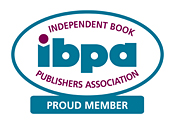
© 2025 Bayla Publishing LLC